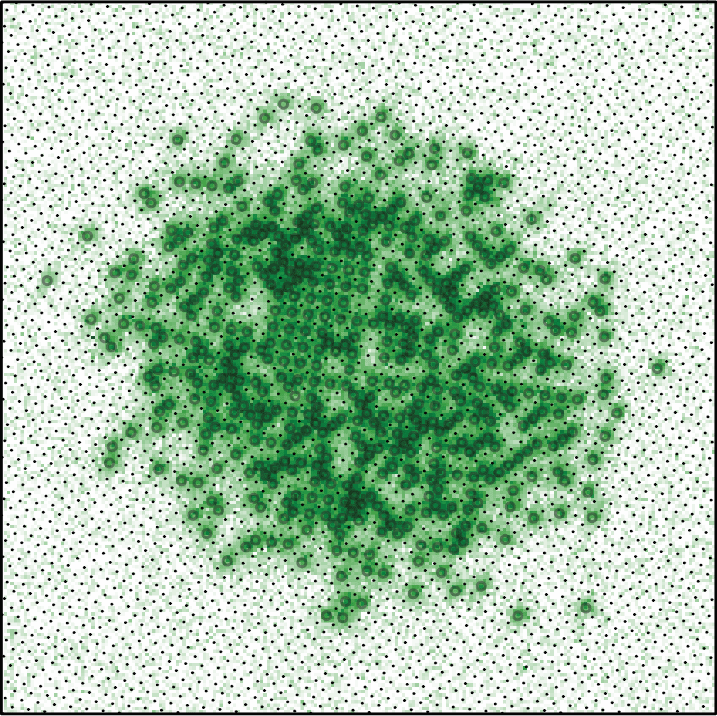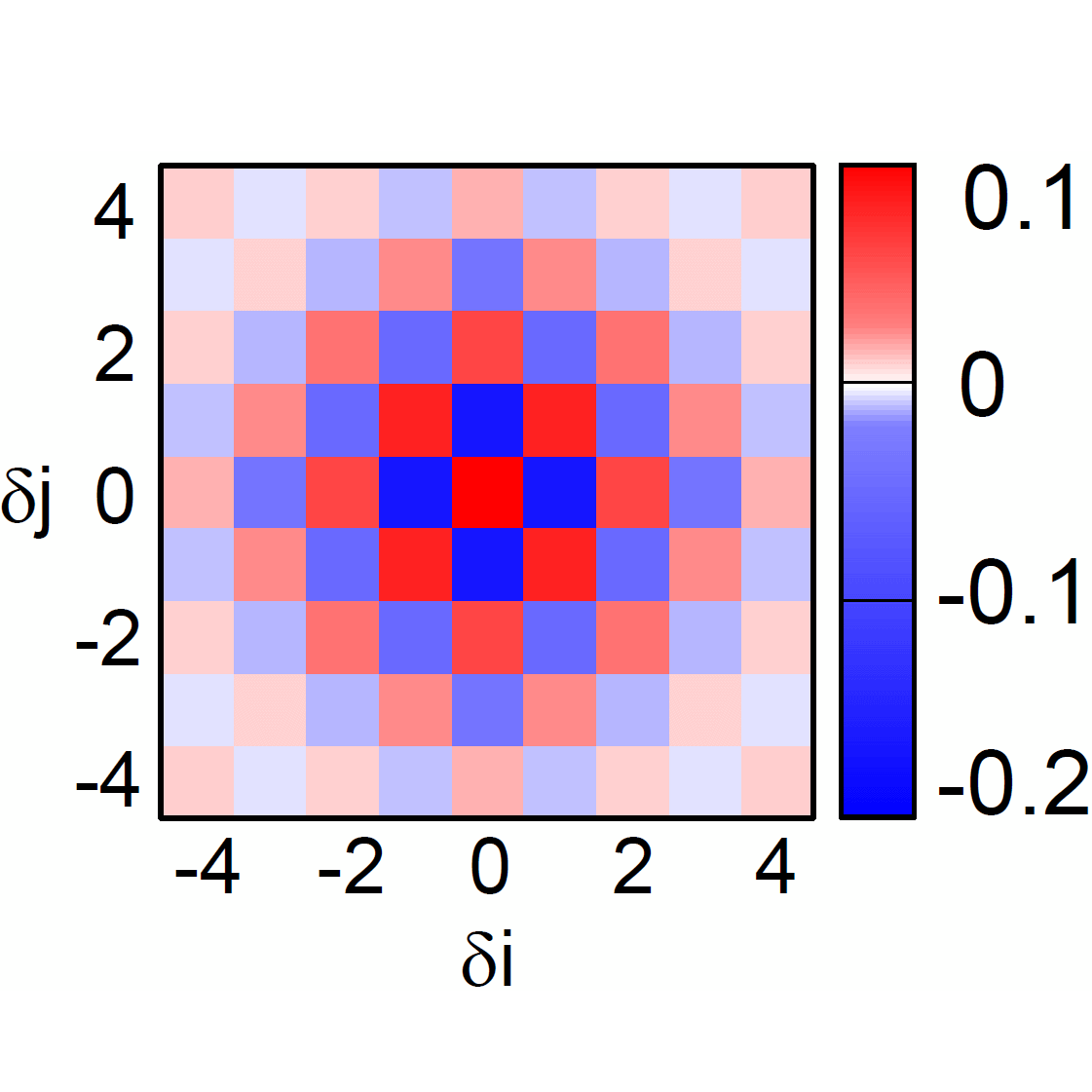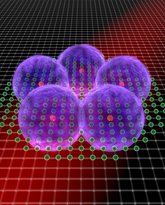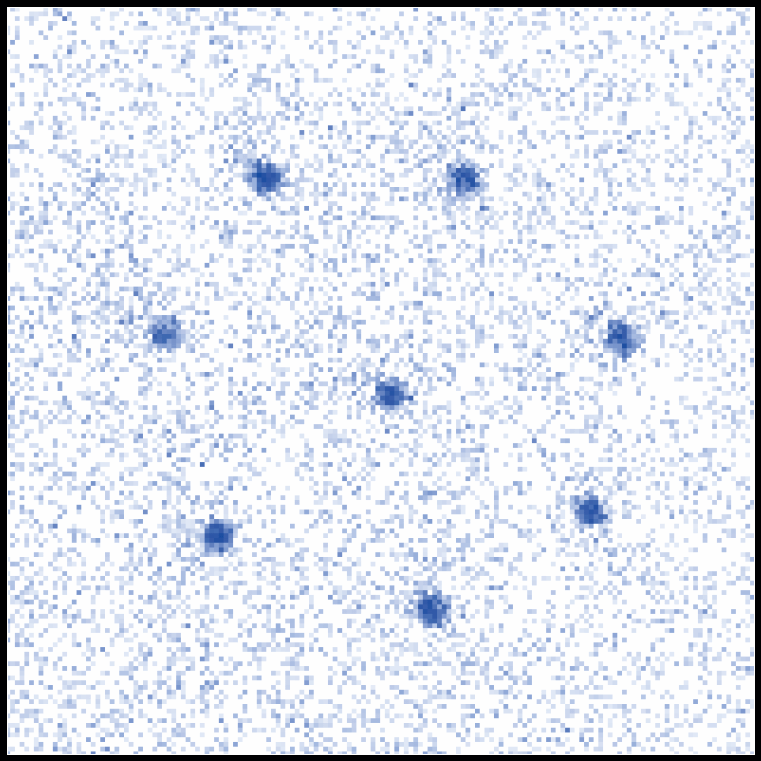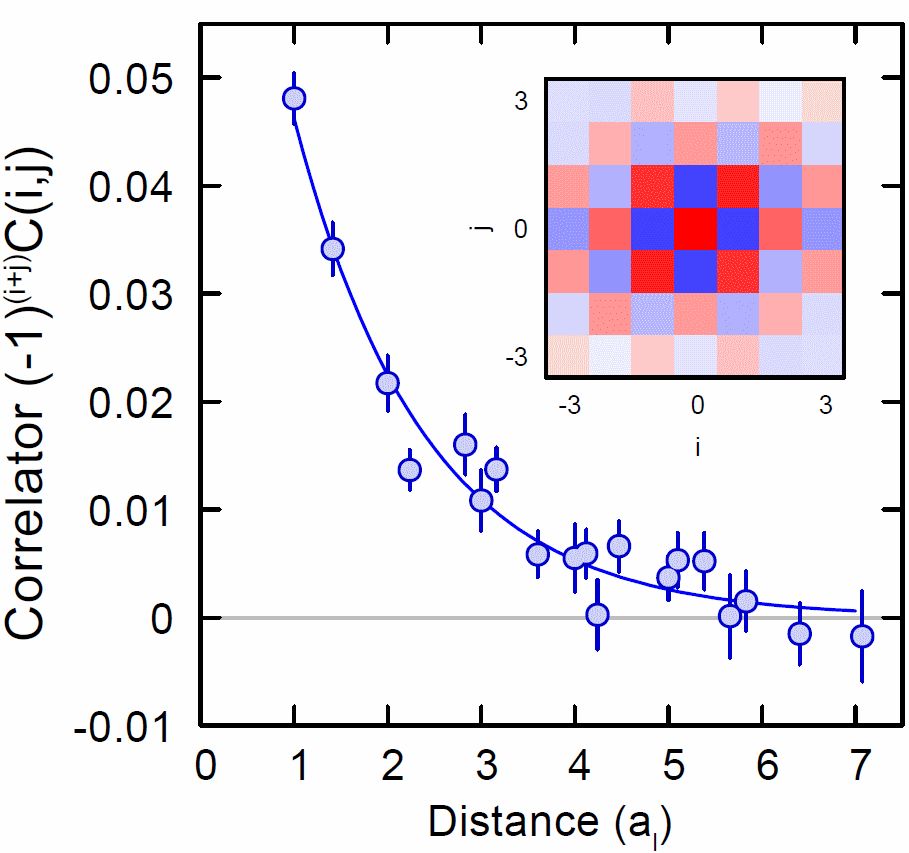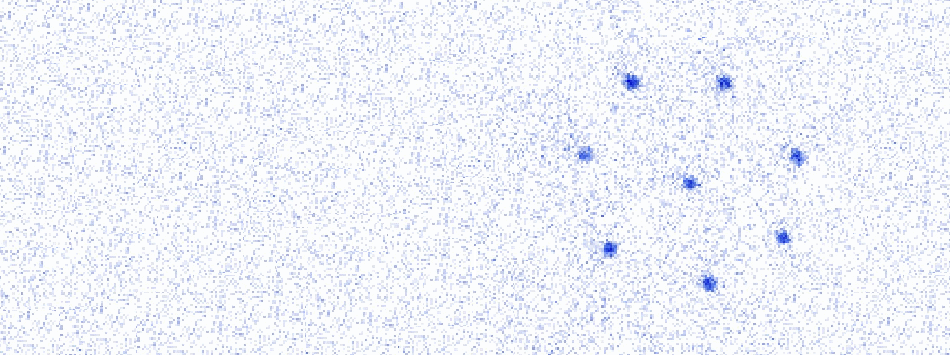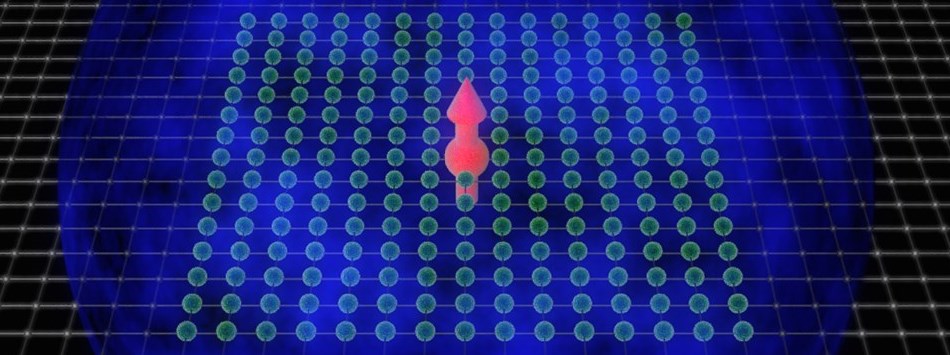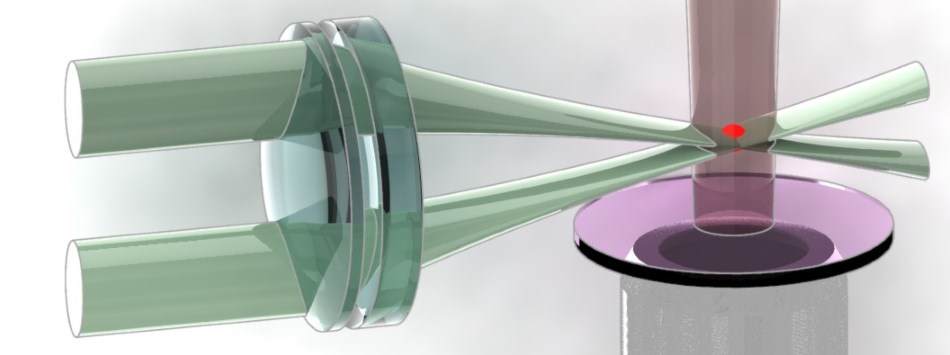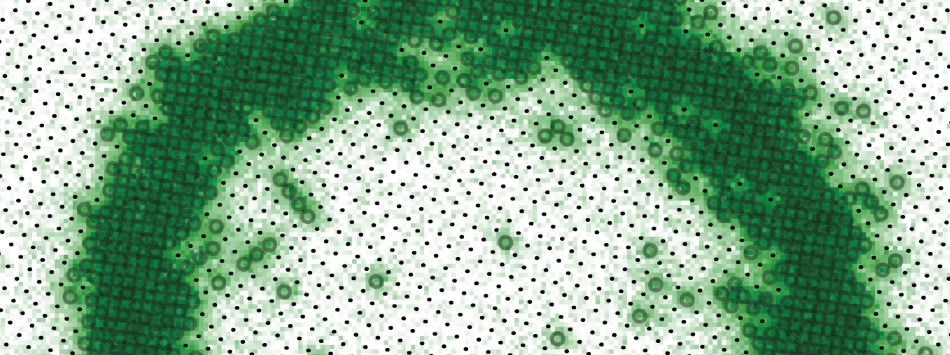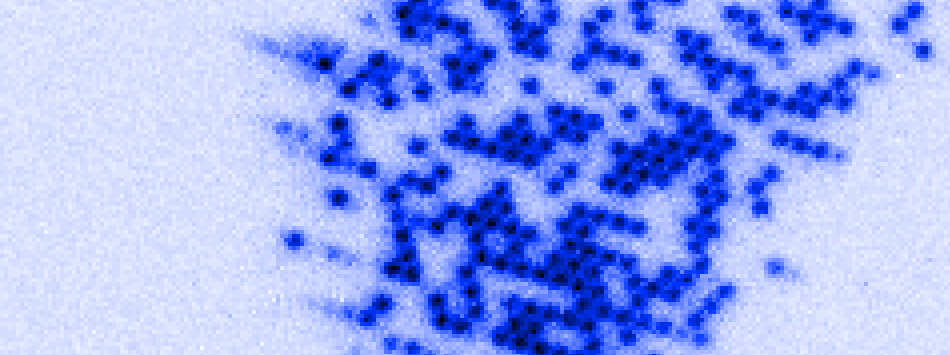Research focus
In our group we focus on the investigation ultracold quantum matter. These strongly correlated systems of many particles in the quantum regime resemble condensed-matter-like systems and are ideally suited to gain insight into microscopic and time-dependent properties. Ultracold atomic gases in optical lattices allow for a complementary view on typical condensed matter model systems and offer unmatched tunability of system parameters. The experiments we perform have an interdisciplinary character in the overlap of atomic and molecular physics, condensed matter physics and quantum simulation.
Our experimental system relies on the well-developed techniques of laser-cooling and atom trapping. These allow to cool atoms into the quantum regime at a few billionth of a degree above absolute zero, where the particle statistics, i.e. whether the atoms are bosons or fermions, is dominating. By loading ultracold atoms into optical lattices very clean realizations of a wide variety of condensed matter models are obtained.
This experimental platform is extremely versatile and previous studies have demonstrated precise measurements of properties of quantum materials. Examples include Hubbard models that are related to high-temperature superconductivity, as well as various types of quantum magnets and topological states.
The fresh and new view on condensed matter model systems provided by ultracold atoms can help to identify the essence of the physics in these systems. These insights then provide guidance to the understanding of real-world quantum materials with competing quantum effects.
Previous Research
Bosons in optical lattices
Spin Hamiltonians emerge naturally with ultracold atoms in optical lattice with exactly one atom per lattice site (
Rev. Mod. Phys. 80, 885).
In this case, first order tunneling is suppressed by interactions and the dynamics is dominated by the second order exchange processes (
Science 319, 295). This effective nearest neighbor interaction implements the Heisenberg spin model. The combination of single-site addressing to prepare a single magnon via a spin-flip with the single-site resolved imaging made the observation of the dynamics of a single magnon possible (
Nature 502, 76). Due to the flexibility of the addressing scheme this enabled the observation of magnon bound states, which were prepared via a spin flip of two neighboring atoms in the lattice (
Nature 502, 76). We also demonstrated entanglement in the spreading of a single spin-down atom in a bath of spin-up atoms (
Phys. Rev. Lett. 115, 035302).
Fermions in optical lattices
With the recently achieved single-site imaging of fermions in optical lattices by several groups it became possible to study the microscopic properties of the Fermi-Hubbard model in direct analogy to condensed matter systems. The fermionic atoms in the lattice behave very similar to electrons in the ion lattice in a solid.
We studied the appearance of antiferromagnetic correlations of fermions (
Science 357, 1385). When loading ultracold fermions with two spin components in a lattice, repulsive interaction suppress double occupancies and the two spin components tend to build up a staggered ordering. While short-range antiferromagnetic ordering can be observed already in single pictures, a quantitative study requires the calculation of correlation functions.
When loading more atoms into the optical lattice the chemical potential overcomes the interaction energy and the atoms form doubly occupied sites in the center of the trap, a so-called band insulator.
Spin models with long-range interactions
using Rydberg atoms
Rydberg atoms are atoms with at least one electron in a highly excited electronic orbital. These atoms have surprisingly long lifetime compared to lower-lying electronic states due to the reduced wavefunction overlap with the ground state. The large electronic wavefunction comes with strong van der Waals interactions that can exceed all other relevant energy scales in the system.
Rydberg atoms are one of the most promising tools to introduce strong power-law interactions into ultracold atomic systems. One approach is to use atoms in optical tweezers (
Nat. Phys. 5, 110,
Nat. Phys. 5, 115), our path is the addition of coupling to a Rydberg state to an optical lattice experiment (
Nature 491, 87).
Long-range interactions enable the study of fundamentally different physics compared to short-range interacting ground state atoms.
The excitation dynamics in the frozen Rydberg gas regime can be described by a spin model with power-law interactions by identifying the electronic ground state with spin-down and the Rydberg state with spin-up.
We achieved the extension of the high-resolution imaging of ground state atoms to imaging of Rydberg atom positions in the optical lattice, giving access to spatial correlation functions between Rydberg atoms. Using this new technique, we measured the pair-correlation of Rydberg atoms excited in a system with one atom per lattice site and extracted the Rydberg blockade radius.
By post-selecting to configurations with a fixed number of Rydberg atoms we observed spatially ordered structures, which spontaneously build up because of the strong interactions between the Rydberg atoms (
Nature 491, 87).
As a next step, we used an adiabatic scheme to prepare states with ordered Rydberg excitations - so-called Rydberg crystals - in a deterministic way (
Science 347, 1455). For that purpose, we implemented a time-dependent control of Rabi frequency and detuning of the Rydberg excitation laser. For the optimization of the trajectories and theoretical modeling of the system we worked in strong collaboration with Thomas Pohl and Tommaso Macrì.
In samples smaller than the blockade radius, collective Rabi oscillation have been measured and entanglement was demonstrated (
Phys. Rev. X 5, 031015).
Antiferromagnetic correlations
in a transverse Ising model
While the previously described Rydberg experiments were all in a regime where the typical interaction range was much larger than the lattice constant, here we are looking into the more strongly correlated regime with dominating nearest-neighbor interactions. Direct coupling of atoms in an optical lattice to Rydberg states with nearest neighbor interaction implements one of the fundamental spin models - a transverse Ising model with longitudinal and transverse field. We studied quench dynamics in this model and prepared antiferromagnetic correlations (
Phys. Rev. X 8, 021069). Very similar experiments have been performed simultaneously in optical tweezers in the group of Antoine Browaeys (
Phys. Rev. X 8, 021070)

